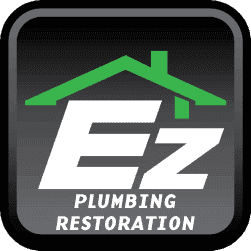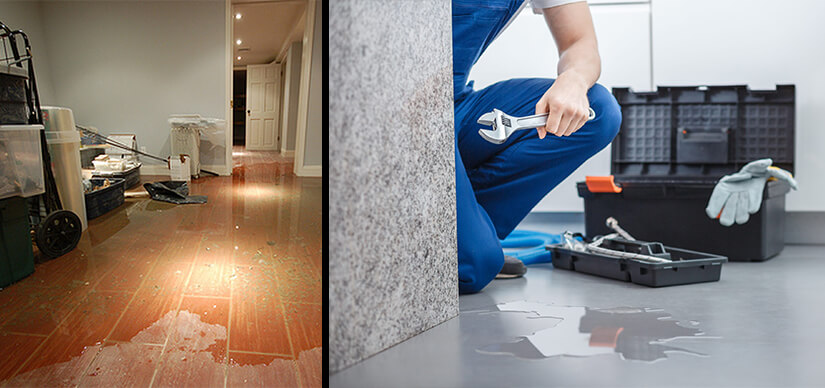Water Damage Restoration In Winter: Useful Tips You Need To Know
Flooding, burst pipes, ice dams, and other water-related problems are just a few of the wintertime problems that can affect homes and businesses.
If your property has been affected by water damage in Irvine, CA, you need to take swift action to repair the damage and prevent further destruction.
To help you get started with water damage repair in Irvine, here are 10 essential tips you need to know about water damage restoration in Irvine.
First, take the following preemptive measures:
Insulate pipes
Insulating pipes with materials such as foam sleeves, fiberglass insulation, or electrical heating tape can slow down the transfer of heat from the pipes to the surrounding cold air.
Be sure to insulate pipes in unheated areas such as the garage, attic, or crawl spaces, as well as those that run along exterior walls.
Keep the temperature constant
Keeping the temperature inside your home consistent, especially during extremely cold weather, can prevent pipes from freezing.
This can be accomplished by setting the thermostat to at least 55 °F, even if you are away from home.
Professionals experienced in water damage repair in Irvine can evaluate the scope of damages and recommend the best solution for restoring your home.
Allow for proper ventilation
Proper ventilation in your attic and crawl spaces can help prevent moisture from condensation on pipes. This can be accomplished by adding ventilation fans or installing vents in these areas.
Allow faucets to drip
Running water, even a slow trickle, can help prevent pipes from freezing. Open the faucets and let them drip slightly to keep water moving through the pipes.
This will reduce the pressure that can build up in the pipes and cause them to burst if they freeze.
Seal air leaks
Cold air can penetrate your home through various sources, such as electrical service entry points, windows, doors, or attic hatchways.
By sealing these air leaks, you can reduce the amount of cold air that comes into contact with your pipes, thereby reducing the risk of freezing. Use caulk, weather stripping, or foam sealant to seal air leaks.
Taking these steps to reduce the risk of frozen pipes can help protect your home and prevent costly damage from bursting pipes.
But what if you wake up to already-existing water damage from frozen pipes? What should you do?
Note that if the faucet valve is opened to reduce pressure traveling down the pipe, a frozen pipe will not necessarily break, preventing the horrible images of water flooding crawl spaces and mold spores from emerging.
If there is already damage, you will need to start the water damage restoration process. To start with, here are five tips:
Shut Off the Water Source
If the source of the water damage is a broken pipe, locate the source of the water and shut off the valves connected to it.
This way, you won’t continue having more water come in and create more damage, preventing further damage.
If you’re unsure where the main water source is located, check your home’s main water valve, which is typically found in the basement or near the street.
Remove standing water and contaminated items
Use a pump or mop to remove any standing water as soon as possible.
This will help prevent water from seeping into the flooring, walls, and other structures, causing more damage. You may need to use buckets, towels, or a wet-dry vacuum to remove standing water, especially if it’s in a large area.
It is also important to remember that you should never enter a flooded room without proper safety gear, such as boots, goggles, and gloves, to protect yourself against harmful bacteria in the water.
As you are removing the excess water, be sure to discard all contaminated items such as carpets, rugs, curtains, and furniture that have been affected by the flood.
Don’t try to clean them, as they might contain bacteria or other pathogens that could make people sick.
Use Fans and dehumidifiers
Running a dehumidifier can help reduce humidity levels and prevent further water damage. Dehumidifiers work by removing moisture from the air, which can help reduce the risk of mold growth.
Make sure you routinely empty the dehumidifier’s water tank. Don’t hesitate to contact a certified water damage specialist if you need water damage repair in Irvine. They have the expertise needed to repair your water-damaged property as quickly as possible.
Depending on the extent of the water damage, they may need to remove damaged materials and replace them with new ones. An experienced water damage repair specialist will also be able to identify any structural problems that need to be addressed before continuing with repairs.
Ventilate
Open all doors and windows to create good ventilation throughout the property. This helps remove humidity, odors, and microbes, which all contribute to a healthy environment after water damage occurs.
Doing this can also help keep temperatures consistent within the house. Furthermore, dehumidifiers and air conditioners can help with moisture levels in the air.
Find out what is damaged. Inspect the Property for Further Damage
When dealing with water damage restoration in Irvine, it’s important to take time to inspect your property for further damage.
This includes taking a look at the structure of the property as well as looking for water spots, stains, and discoloration on walls, ceilings, and floors.
You may also want to check for any structural damage to the floor, such as warping or buckling, which can be a sign of water damage.
Take note of any electrical issues such as sparking or short-circuiting, as this could be a sign that there has been some water intrusion.
If you notice any of these signs, contact a professional water damage restoration company in Irvine right away to properly address the issue.
Prevent Future Water Damage
One of the best ways to prevent future water damage is to identify and fix the source of the problem.
In some cases, the source may be something as simple as a broken pipe or leaky faucet, but it may also be something more complicated like a roof or foundation issue.
Once the source of the problem is identified, it is important to take action to address it. Depending on the nature of the problem, this could include calling a professional contractor or using a DIY approach.
If the source of the problem is located outside your home, such as a broken pipe under your lawn, you should contact a local professional for assistance.
If the water damage was caused by heavy rains or floods, there are some things you can do to protect your property in the future. One option is to install gutters and downspouts that are designed to direct rainwater away from your home.
You should also look into installing an exterior waterproofing system to help keep water out of your basement or crawlspace. Additionally, it is important to maintain your landscaping to keep it free of debris and obstructions that could block rainwater runoff.
Finally, it is important to have regular maintenance checks on your home and all appliances that use water. This will help you catch any small issues before they become bigger and more expensive problems.
If you notice any signs of water damage, make sure to contact a professional plumber in Irvine immediately for help with repairs and restoration.
Conclusion
In conclusion, water damage can be a major problem in the winter and can cause serious harm to your property if not taken care of properly.
By following these 10 tips, you can effectively minimize the damage and restore your home to its pre-damage condition. It is essential to act quickly and take the necessary steps to prevent further damage.
Contact a professional water damage repair company in Irvine for assistance, if necessary. Remember, timely action and proper restoration techniques can help you save your home and possessions from being destroyed.


